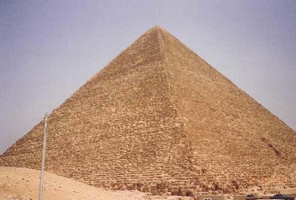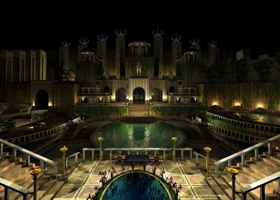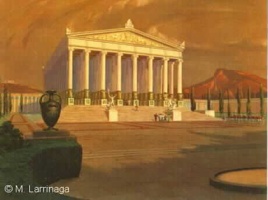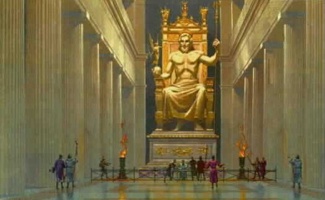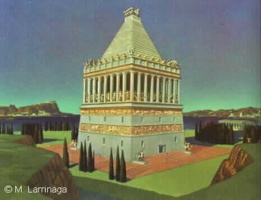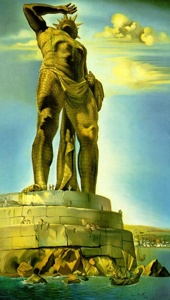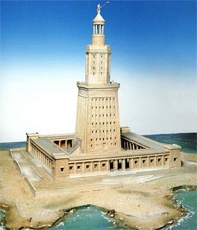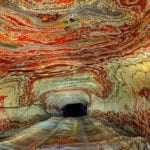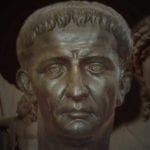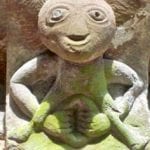 Weird Stuff
Weird Stuff  Weird Stuff
Weird Stuff  Animals
Animals 10 Inspiring Tales of Horses Being Human
 Mysteries
Mysteries Top 10 Haunting Facts About the Ghost Ship MV Alta
 History
History 10 Surprising Stories About the Texas Rangers
 Humans
Humans 10 Philosophers Who Were Driven Mad by Their Own Theories
 Miscellaneous
Miscellaneous 10 Video-Game-Worthy Weapons and Armors from History
 Weird Stuff
Weird Stuff 10 Psychics Who Accurately Predicted Wartime Events
 The Arts
The Arts 10 Pieces of Art Inspired by a Broken Heart
 Health
Health 10 Science Fiction-Sounding New Medical Treatments
 History
History 10 Surprising Facts About the Father of Submarine Warfare
 Weird Stuff
Weird Stuff 10 Times Real Laws Were Based on Bizarre Hypotheticals
 Animals
Animals 10 Inspiring Tales of Horses Being Human
 Mysteries
Mysteries Top 10 Haunting Facts About the Ghost Ship MV Alta
Who's Behind Listverse?

Jamie Frater
Head Editor
Jamie founded Listverse due to an insatiable desire to share fascinating, obscure, and bizarre facts. He has been a guest speaker on numerous national radio and television stations and is a five time published author.
More About Us History
History 10 Surprising Stories About the Texas Rangers
 Humans
Humans 10 Philosophers Who Were Driven Mad by Their Own Theories
 Miscellaneous
Miscellaneous 10 Video-Game-Worthy Weapons and Armors from History
 Weird Stuff
Weird Stuff 10 Psychics Who Accurately Predicted Wartime Events
 The Arts
The Arts 10 Pieces of Art Inspired by a Broken Heart
 Health
Health 10 Science Fiction-Sounding New Medical Treatments
 History
History 10 Surprising Facts About the Father of Submarine Warfare
The 7 Wonders of the Ancient World
There has recently been a commotion around the world as a new 7 wonders were being voted on and selected. So, before everyone forgets the original list, this is the complete 7 Wonders of the Ancient World. The earliest extant copy of a list of the 7 Wonders comes from Antipater of Sidon from around 140 BC. What list site would be complete without the first famous list?
7 Great Pyramid of Giza
Constructed: 2650-2500 BC
By:The Egyptians
The great pyramid is the Pyramid of Khufu (Cheops) which he had built for his tomb. When it was built, the Great pyramid was 145.75 m (481 ft) high. Over the years, it lost 10 m (30 ft) off its top. It ranked as the tallest structure on Earth for more than 43 centuries, only to be surpassed in height in the nineteenth century AD. It was covered with a casing of stones to smooth its surface (some of the casing can still be seen near the top of Khefre’s pyramid). The sloping angle of its sides is 51 degrees and 51 minutes. Each side is carefully oriented with one of the cardinal points of the compass, that is, north, south, east, and west. The horizontal cross section of the pyramid is square at any level, with each side measuring 229 m (751 ft) in length. The maximum error between side lengths is astonishingly less than 0.1%.
Sadly, this is the only one of the seven wonders still in existence.
Learn more about these incredible wonders with The Seven Wonders of the Ancient World at Amazon.com!
6 Hanging Gardens of Babylon
Constructed: 600 BC
By: The Babylonians
Destroyed: After 1st Century BC
Cause: Earthquake
The Hanging Gardens were located in what is now Iraq and Nebuchadnezzar II (604-562 BC) is credited for having built them. It is said that the Gardens were built by Nebuchadnezzar to please his wife or concubine who had been “brought up in Media and had a passion for mountain surroundings”.
Strabo and Philo of Byzantium saw the gardens and said this:
“The Garden is quadrangular, and each side is four plethra long. It consists of arched vaults which are located on checkered cube-like foundations.. The ascent of the uppermost terrace-roofs is made by a stairway…”
“The Hanging Garden has plants cultivated above ground level, and the roots of the trees are embedded in an upper terrace rather than in the earth. The whole mass is supported on stone columns… Streams of water emerging from elevated sources flow down sloping channels… These waters irrigate the whole garden saturating the roots of plants and keeping the whole area moist. Hence the grass is permanently green and the leaves of trees grow firmly attached to supple branches… This is a work of art of royal luxury and its most striking feature is that the labor of cultivation is suspended above the heads of the spectators”.
5 Temple of Artemis at Ephesus
Constructed: 550 BC
By: The Lydians, Persians, and Greeks
Destroyed: 356 BC
Cause: Arson
The Temple of Artemis was in the ancient city of Ephesus near the modern town of Selcuk, about 50 km south of Izmir (Smyrna) in Turkey. Those who saw it considered it to be the most beautiful structure on earth. The composer of the original list of 7 wonders said this: “But when I saw the sacred house of Artemis that towers to the clouds, the [other Wonders] were placed in the shade, for the Sun himself has never looked upon its equal outside Olympus.”
The foundation of the temple was rectangular in form, similar to most temples at the time. Unlike other sanctuaries, however, the building was made of marble, with a decorated façade overlooking a spacious courtyard. Marble steps surrounding the building platform led to the high terrace which was approximately 80 m (260 ft) by 130 m (430 ft) in plan. The columns were 20 m (60 ft) high with Ionic capitals and carved circular sides. There were 127 columns in total, aligned orthogonally over the whole platform area, except for the central cella or house of the goddess.
The temple housed many works of art, including four ancient bronze statues of Amazons sculpted by the finest artists at the time. When St Paul visited the city, the temple was adorned with golden pillars and silver statuettes, and was decorated with paintings. There is no evidence that a statue of the goddess herself was placed at the center of the sanctuary, but there is no reason not to believe so.
On the night of 21 July 356 BC, a man named Herostratus burned the temple to ground in an attempt to immortalize his name, which he did indeed. Alexander the Great was born the same night.
4 Statue of Zeus at Olympia
Constructed: 435 BC
By: The Greeks
Destroyed: 5th-6th Centuries AD
Cause: Unknown
This is the statue of the god in whose honor the Ancient Olympic games were held. It was located on the land that gave its name to the Olympics. At the time of the games, wars stopped, and athletes came from Asia Minor, Syria, Egypt, and Sicily to celebrate the Olympics and to worship their king of gods: Zeus.
The statue was so high that its head nearly touched the ceiling, giving one the impression that if he were to stand up, he would unroof the temple. It was so large that most descriptions that exist are of the throne and not the body or head of the god.
The Greek Pausanias wrote: On his head is a sculpted wreath of olive sprays. In his right hand he holds a figure of Victory made from ivory and gold… In his left hand, he holds a sceptre inlaid with every kind of metal, with an eagle perched on the sceptre. His sandals are made of gold, as is his robe. His garments are carved with animals and with lilies. The throne is decorated with gold, precious stones, ebony, and ivory.
3 Mausoleum of Maussollos at Halicarnassus
Constructed: 351 BC
By: The Persians, and Greeks
Destroyed: 1494
Cause: Earthquake
This is another burial place (like the Great Pyramid) which was located in the city of Bodrum (Halicarnassus) on the Aegean Sea, in south-west Turkey. The structure was rectangular in plan, with base dimensions of about 40 m (120 ft) by 30 m (100 ft). Overlying the foundation was a stepped podium which sides were decorated with statues. The burial chamber and the sarcophagus of white alabaster decorated with gold were located on the podium and surrounded by Ionic columns. The colonnade supported a pyramid roof which was in turn decorated with statues. A statue of a chariot pulled by four horses adorned the top of the tomb.
The beauty of the Mausoleum is not only in the structure itself, but in the decorations and statues that adorned the outside at different levels on the podium and the roof. These were tens of life-size as well as under and over life-size free-standing statues of people, lions, horses, and other animals. The statues were carved by four Greek sculptors: Bryaxis, Leochares, Scopas, and Timotheus, each responsible for one side. Because the statues were of people and animals, the Mausoleum holds a special place in history as it was not dedicated to the gods of Ancient Greece.
2 Colossus of Rhodes
Constructed: 292-280 BC
By: The Hellenistic Greeks
Destroyed: 224 BC
Cause: Earthquake
The Colossus was located at the entrance of the harbour of the Mediterranean island of Rhodes in Greece. Contrary to popular believe, the statue did not straddle the harbour, it stood to its side. The project was commissioned by the Rhodian sculptor Chares of Lindos. To build the statue, his workers cast the outer bronze skin parts. The base was made of white marble, and the feet and ankle of the statue were first fixed. The structure was gradually erected as the bronze form was fortified with an iron and stone framework. To reach the higher parts, an earth ramp was built around the statue and was later removed. When the colossus was finished, it stood about 33 m (110 ft) high. And when it fell, “few people can make their arms meet round the thumb”, wrote Pliny.
Sadly the statue stood for a mere 56 years, but was so beautiful that it earnt its place in the seven wonders. We do not know what the statue looked like so only guesses can be made in attempts to draw it.
Watch Sergio Leone’s (director of Once Upon a Time in the West) lesser known epic The Colossus of Rhodes at Amazon.com!
1 Lighthouse of Alexandria
Constructed: 3rd Century BC
By: The Hellenistic Egyptians
Destroyed: 1303-1480 AD
Cause: Earthquake
The Lighthouse of Alexandria was located on the ancient island of Pharos, now a promontory within the city of Alexandria in Egypt. Of the Seven Wonders of the Ancient World, only one had a practical use in addition to its architectural elegance: The Lighthouse of Alexandria. For sailors, it ensured a safe return to the Great Harbor. For architects, it meant even more: it was the tallest building on Earth. And for scientists, it was the mysterious mirror that fascinated them most. The mirror’s reflection could be seen more than 50 km (35 miles) off-shore.
Of the six vanished Wonders, the Lighthouse of Alexandria was the last to disappear. Therefore we have adequately accurate knowledge of its location and appearance. Ancient accounts such as those by Strabo and Pliny the Elder give us a brief description of the “tower” and the magnificent white marble cover. They tell us how the mysterious mirror could reflect the light tens of kilometers away.
The internal core was used as a shaft to lift the fuel needed for the fire. At the top stage, the mirror reflected sunlight during the day while fire was used during the night. In ancient times, a statue of Poseidon adorned the summit of the building.
Afterword
The descriptions of the Wonders used here is taken from the work of Associate Professor Alaa Ashmawy.
